
Three Reasons Rotary Screw Air Compressors Win the Total Cost of Ownership Derby. And 10 Ways to Drive It Even Lower!
April 2, 2025
Your Gameplan for Optimizing Rotary Screw Air Compressors for Maximum Energy Savings
April 16, 2025Four Key Steps to Extend the Lifespan of Your Rotary Screw Compressor with Proper Lubrication
Kaishan USA | April 9, 2025| Uncategorized
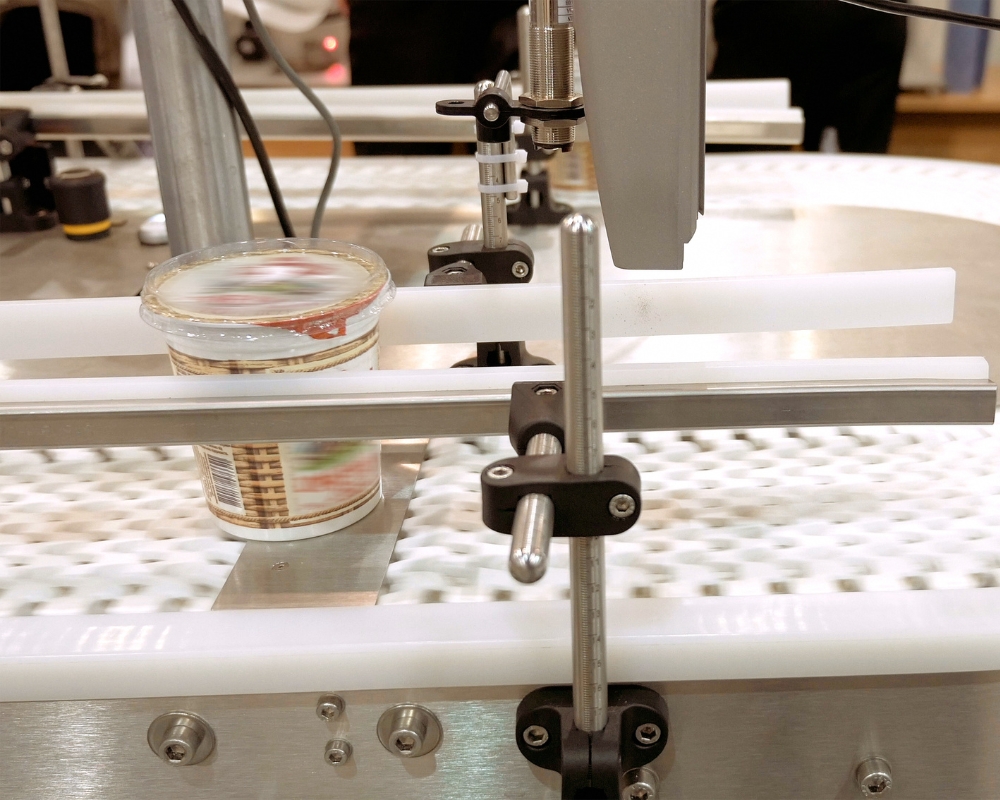
Applications in the food industry that do not have direct contact with food may be able to use rotary screw air compressors equipped with advanced ISO 8573-1:2010 filters and food-grade lubricants. However, to extend the compressor's lifespan, you must change the oil more often (every 4,000 hours) and draw an oil sample every 1,000 hours.
Oil plays a crucial role in the life of an oil-lubricated rotary screw air compressor:
- Removing impurities. Oil removes contaminants and protects your unit’s components from oxidation and corrosion.
- Sealing. It acts as a sealant between the male and female rotors, making the compressor more efficient.
- Cooling. It reduces friction and wear, lubricates components, removes the heat of compression and lowers operating temperature. Thus, oil-lubricated compressors can handle hotter environments and operate more efficiently (and cooler).
That’s why we place so much importance on selecting the right oil for our compressors.
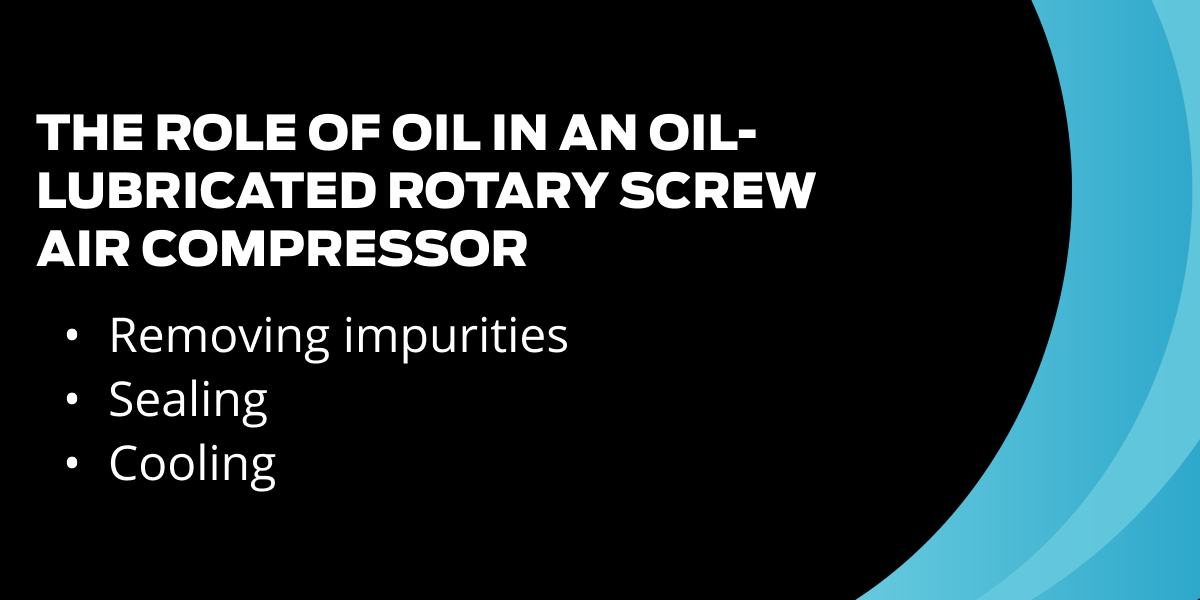
Selecting the Right Oil
Kaishan worked with an expert global developer of industrial lubricants to formulate the rotary compressor oil we install in our compressors. Our KTL-8000 rotary compressor oil is a hydrologically stable synthetic with ester chemistry additives.
KTL-8000 has been specially formulated for Kaishan’s rotary screw air compressors, enabling them to overperform in any industrial setting. It lasts two times longer than mineral oil-based products.
Special additives help remove debris (carbon emissions or other contaminants) and keep acid from building up in the oil. When the acid concentration becomes too high, varnish can precipitate out of the oil and deposit on rotors, reducing efficiency.

Varnish can drop out of the oil solution and adhere to components, reducing efficiency.
We also offer food-grade lubricants and a PG (polyglycol) alternative for high-humidity conditions.
Use KTL-8000 To Maintain Warranty Eligibility
The careful formulation of KTL-8000 helps to offer industry-leading warranty protection on our compressors:
- Our standard warranty covers the complete compressor package for 12 months from the date of startup (or 18 months after it’s shipped, whichever comes first), with an airend warranty of 24 months.
- We back our KRSP and KRSP2 screw compressors with an extended lifetime warranty on the airend.
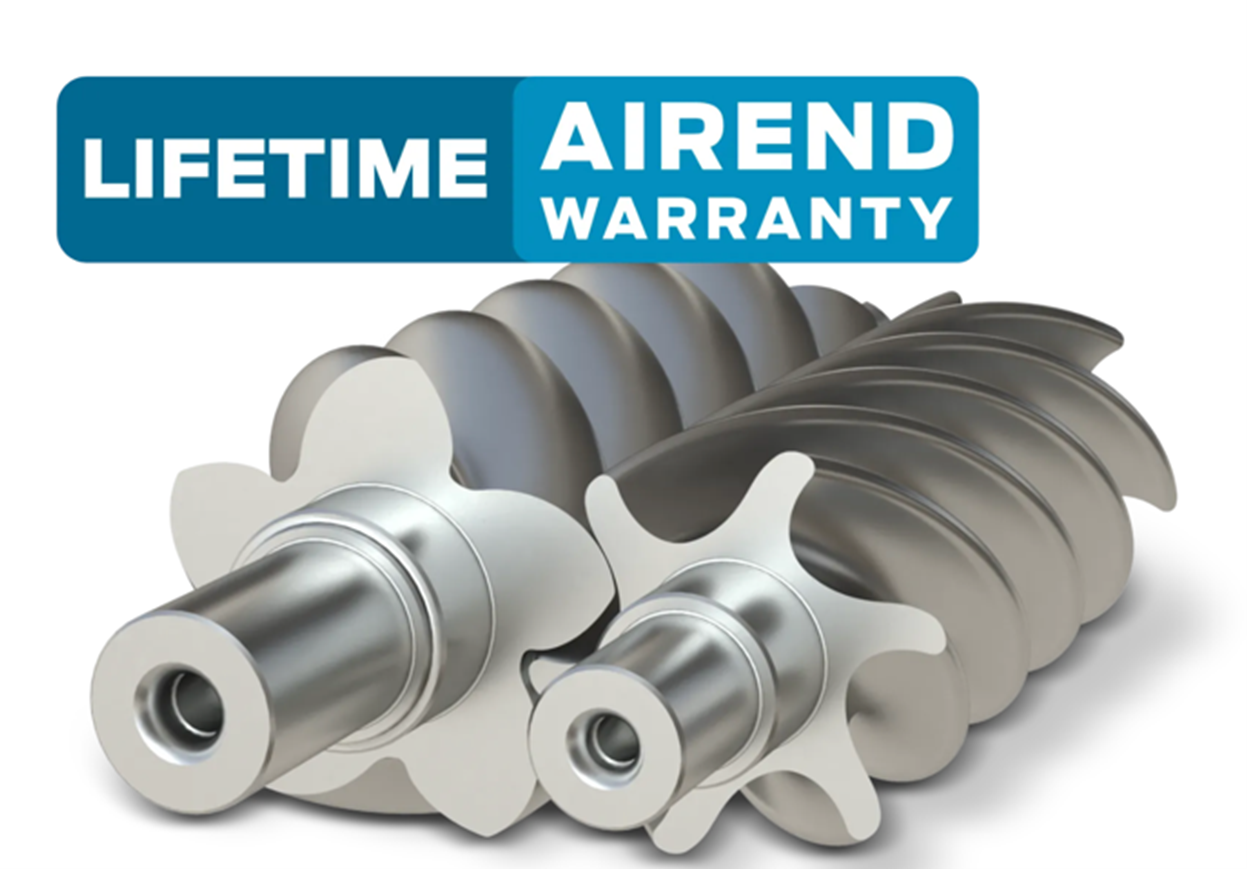
An unmatched lifetime airend warranty backs Kaishan’s KRSP and KRSP2 screw compressors.
Our extended warranties, provided at no additional cost, require that end users use genuine Kaishan industrial air compressor parts and sample the oil every 2,000 hours or 1,000 hours for food-grade applications (see the “Oil Sampling” section below). Your local service provider may want to customize the intervals if conditions are challenging. Using generic or aftermarket parts/fluids will void the warranty.
For more on choosing the right oil for your compressor, read our blog post, “Choosing the Right Rotary Compressor Oil.”
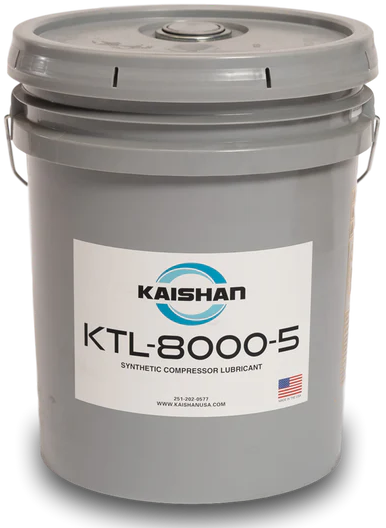
Kaishan’s KTL-8000 air compressor oil.
Visit our website to download the KTL-8000 safety data sheet.
Maintaining your air compressor’s oil is essential to its performance and useful life. We recommend four key steps to keep your oil system functioning at peak efficiency.
1. Check the Oil Level Before Starting Your Compressor
Check the oil level using the sight glass before starting your compressor. Add oil if the level has dropped.
2. Change Oil and Oil Filters Following Your OEM’s Recommended Intervals
Rotary screw air compressors offer several other advantages that may not directly impact TCO, but make life easier for compressed air system operators:
Changing oil filters every 2,000 hours helps remove contaminants from the oil. Change the oil yearly (8,000 hours) or every 4,000 hours for food-grade lubricants. Use reputable, OEM-approved lubricant and filters.
There Is Oil in an Oil-Free Compressor
Oil-free units—both centrifugal and oil-free rotary screw air compressors—do not rely as much on oil as an oil-lubricated screw compressor. However, they do have oil. They use it to keep the high-speed rotating gears lubricated. However, oil does not enter the compression chamber as it does in an oil-lubricated rotary screw machine.
Oil-free rotary screw compressors also rely on oil to lower the operating temperatures in the stage cooling jackets (keeping casting temperatures lower). And while they do not have the same need for oil changes as oil-lubricated units, the oil still must be changed occasionally. Make sure to follow your manufacturer’s recommendations.
You’ll need to adjust your maintenance intervals to allow for challenging operating and installation conditions:
- If you operate 24/7, you'll need more frequent maintenance.
- When you have demanding conditions such as high temperatures or dust and dirt in your intake air, you’ll want to shorten the intervals for changing and sampling oil.
- When using food-grade oil, you should sample your oil every 1,000 hours and act on the recommendations in the analyst’s report.
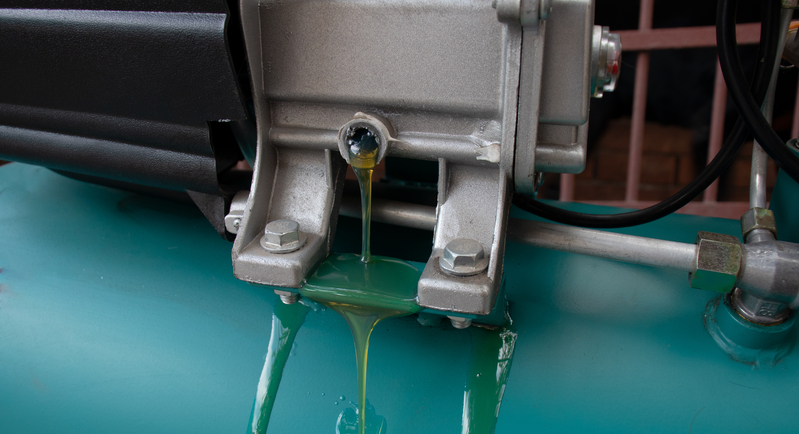
Change the oil in an oil-lubricated rotary screw air compressor every 8,000 hours or every 4,000 hours for food-grade lubricants.
When you change the oil, drain the cooler completely to ensure that no residual oil is left behind. Failing to drain your oil cooler completely is like mixing fresh milk with curdled milk; leaving even a tiny amount of the old oil can significantly impact the life of the new lubricant.
The good news? Kaishan KRSP and KRSP2 premium rotary screw air compressors have a separate drain point and atmospheric vent installed to make this process easy.

Kaishan’s KRSP2 rotary screw air compressors premium have a separate drain point and atmospheric vent installed to make it easier to drain the oil completely. The KRSP2 also has an extended lifetime warranty on the airend.
Our constant refrain with customers: Maintain these machines properly, and you will get years of reliable service. Changing your oil on time is the cheapest insurance you can get for any piece of equipment.
Doing it correctly and often is the best way to ensure your oil quality and prolong equipment life. Another essential part of that maintenance is the air-oil separator.
3. Change the Oil Separator and Lubricant Every Year, Every 8,000 Hours, or as Per Your Manufacturer’s Guidelines
An air-oil separator is a specialized device featuring a mesh filter element located in a tank, also called a sump. The combination of the swirling action in the tank and the filtration action of the element removes oil mist from the air leaving an oil-flooded screw compressor.
Original equipment manufacturers like Kaishan match the air-oil separator elements with the specific gravity and velocity of the lubricants. The goal is to engineer the fibers and the lubricant to optimize oil capture perfectly.
As a result, using knock-off separators or cheap oil throws that carefully engineered system out of whack, resulting in oil carryover and loss of quality.
As we note in our blog post, “How to Maintain Your Air Compressor with Genuine Spare Parts,” inappropriate replacement of an air-oil separator can result in fires, explosions and even injuries to workers.
And while dramatic events like fires and explosions rarely happen, a problem with an air-oil separator can have many other negative consequences, including:
- Oil pass-through, resulting in poor air quality
- Pressure drop
- Increased cost
- Damage to downstream equipment
Maintaining an air-oil separator is critical to the operation of an oil-flooded machine, such as Kaishan’s KRSP2 premium rotary screw air compressor.
Change the oil separator and lubricant every 4,000 hours if it’s a spin-on type and annually or every 8,000 hours if it’s a standard, drop-in type. As always, you should follow your manufacturer’s recommendations. Check the oil separator pressure differential and replace it if the pressure drop through the separator is over 10 PSIG.
Remember to check the scavenge line, too! Clogged scavenge lines and orifices are the top cause of oil carry-over.
For more on the importance of air-oil separators, read our blog post, “Everything You Need to Know About Air/Oil Separators.”
Another crucial step you can take to extend compressor life is oil sampling.
4. Oil sampling
Regular oil sampling will tell you whether your compressor is exposed to excessive heat or taking in contaminants. It can also detect excessive bearing wear, allowing you to be proactive when you uncover a problem and even avoid an unplanned shutdown.

We consider oil sampling the most critical maintenance procedure for our compressors.
Oil sampling extends the life of the lubricant and your equipment. It verifies that your air compressor oil will last as long as expected and measures the level of contamination, lubricant oxidation and additive depletion. It is critical if a compressor is exposed to excessive heat or contaminants or does not run often enough.
Even more importantly, oil sampling can help you identify significant variations even within your facility. We’ve seen occasions where one compressor gets 10,000 hours before needing an oil change, while the same compressor at the opposite end of the factory needs an oil change after 4,000 hours. It’s all about the operating environment—the airborne dust and dirt, especially—and how it’s used.
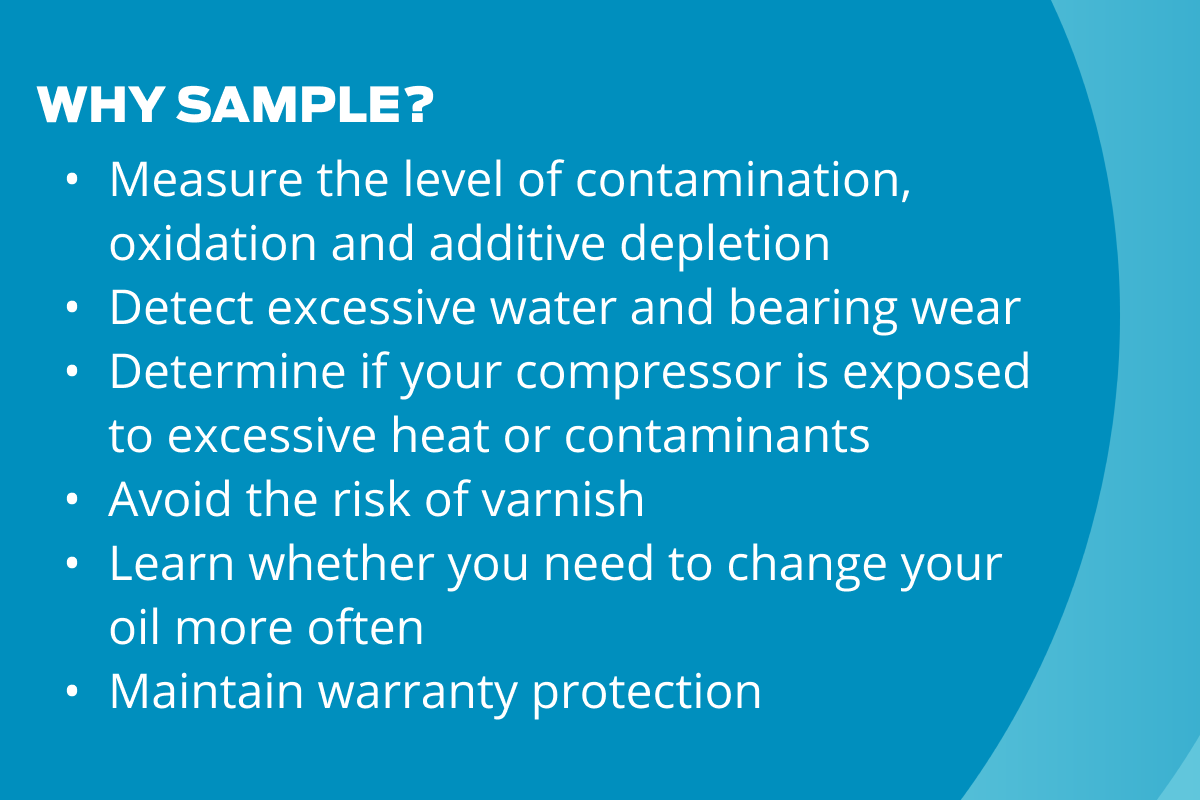
That’s why we consider oil sampling the most critical maintenance procedure for our compressors. We require that our customers collect an oil sample and have it analyzed every 2,000 hours or every 1,000 hours for food-grade applications to maintain extended warranty protection. Failing to collect an oil sample is one of the most frequent causes of warranty denials.
For more on oil sampling, read our blog post, “Choosing the Right Rotary Compressor Oil.”
Oil: The Lifeblood of Your Compressor
We often say that oil is the lifeblood of an oil-lubricated rotary screw air compressor. Giving your compressor’s lubrication system the attention it deserves is well worth the effort. A little TLC goes a long way in providing reliable performance, reducing unplanned downtime and extending equipment life of rotary screw air compressor.
To achieve those benefits, it helps to have a local compressed air professional to supplement the efforts of your maintenance staff and compressor operators. The nationwide network of independent distributors we work with can provide that kind of on-site help and consultation. They can train your people and help you set up a regular maintenance program that will keep your compressor running efficiently for years or even decades.
Based on our experience, we chose to partner with independent, local distributors because it's the best way to ensure you have the help you need to select the right compressor, size it properly, operate it efficiently and maintain it for reliable, long-term service. They enable us to make a critical commitment to you: great equipment, expert help and the parts and supplies you need when you need them.
Key Takeaways
- The four key steps to increase equipment life include checking oil levels before starting your compressor, changing oil regularly, changing the oil separator and doing oil sampling.
- Oil plays a crucial role in the life of an oil-lubricated rotary screw air compressor.
- Our extended warranties, provided at no additional cost, require that you use genuine Kaishan industrial air compressor parts and sample the oil every 2,000 hours (or 1,000 hours for food-grade applications).
- Using generic or aftermarket parts/fluids will void our extended warranty.
Let Us Help
Maintaining your rotary screw air compressor’s lubrication system is critical to your compressor’s everyday performance as well as its long-term health. If you need help with lubrication, maintenance issues, or any other compressed air concerns, reach out to the experts at Kaishan. Contact us today.
Listen to the Podcast Version
The Role of Lubrication in Maximizing Compressor Efficiency
Hey, everyone! Welcome back to the Big Dog podcast! Thanks again for joining us.Alright, Lisa, so let’s jump right into this. Lubrication. We hear it all the time, right? It’s the lifeblood of rotary screw compressors. But why is it so crucial?
Yeah, and it’s more than just keeping things moving smoothly. I mean, it’s a multitasker. Cooling, sealing, and getting rid of those contaminants that can wreak havoc on your machine’s internals. It’s all about protecting the core components—reducing heat and wear, and ultimately giving you a compressor that lasts longer. A lot longer.
Exactly. And that’s what everyone wants, right? Longer lifespan, fewer breakdowns. But the kicker is, it’s not just about slapping some oil in the system and calling it a day. There’s a process. Regular oil sampling, for one. It’s not just a nice-to-have; it’s a must.
Totally. And here’s where it gets interesting. I was talking to a plant manager who finally got serious about oil sampling. He was dealing with skyrocketing operational costs—constant downtime, replacing parts, you name it. But once they implemented a structured oil sampling schedule? Game changer. They caught issues early, adjusted their maintenance plan, and saved a ton of money in the long run.
Right, and it’s such a simple adjustment, too. Sampling lets you catch things like oxidation, contaminants, even early signs of wear. And when you’re dealing with food-grade oils, it’s even more frequent. Every thousand hours, minimum.
Exactly. And that’s something to keep in mind—it’s not just about maintenance; it’s about precision. Using the right oil, monitoring it properly, and acting on the data. It’s a full-circle approach that protects your investment and keeps everything running efficiently.
And let’s not forget: oil also works as a sealant between the rotors. That’s efficiency right there. It’s sealing while cooling, all at once. But all of that goes out the window if you don’t stay on top of your oil changes.
Essential Maintenance Protocols
So, building on that full-circle approach Lisa mentioned—let’s get down to the essentials: daily checks, regular replacements, and oil sampling. They sound simple, but skipping even one? That’s when you start running into trouble.Exactly. Let’s start with the basics—checking your oil level. This is like step one, right before anything else. Use the sight glass, make sure it’s at the proper level, and top it off if you need to. It’s quick, routine, but so many people overlook it.
And then there’s oil changes. This one’s gold. Stick to the intervals your OEM recommends. For food-grade oils, like Kaishan’s, every 4,000 hours. Regular lubricants? You can usually push it to 8,000, but—and this is important—only if conditions allow. Dusty environments, high humidity? Swap that oil sooner.
Right, and it’s not just the oil. The filters are a big deal, too. Change them every 2,000 hours, minimum. The filters keep contaminants from circulating, which is so important for the health of the whole system. And if you’re neglecting that? You’re essentially sabotaging your own equipment.
Yeah, sabotaging is the right word. Which brings us to air-oil separators. These things are critical, especially in oil-lubricated compressors. Let me tell you, I’ve seen what happens when this gets ignored. A customer I worked with once—they thought they’d save a buck by skipping a replacement. Fast forward a few weeks? Complete downtime. Oil got into the compressed air system, ruined their downstream equipment, and the costs ballooned from a few hundred dollars to tens of thousands.
Yikes. And honestly, it’s avoidable. You know, following the manufacturer’s guidelines isn’t just a suggestion—it’s a way to protect your uptime, your efficiency, and yeah, even your warranty. And Kaishan’s extended warranties hinge on using genuine parts and sticking to those oil sampling schedules. This isn’t just them being picky—it’s about ensuring the system stays precise and reliable.
Exactly. And warranties aside, sampling is just smart maintenance. It gives you the data—you’re not flying blind. Neglect the data? You’re gonna pay for it, one way or another.
Advancements in Lubrication Technology
You know, Lisa, we’ve covered the essentials—daily checks, replacements, and sampling. But what’s also exciting is how innovation helps simplify all of that. Take Kaishan’s KTL-8000 synthetic oil, for example—it’s not just another oil; it’s a game changer. Let’s dive into why it makes such a difference.Ah, KTL-8000. This is where things get interesting. So, synthetic oils like this aren’t just about longevity, though, yeah, it lasts twice as long as mineral oils. It’s about what’s packed inside. The formula is engineered to resist varnish accumulation, which is huge because varnish can gum up the system and wreck efficiency.
Right, and varnish is no small issue. Once it starts, it’s not just a clean-up job—it impacts performance across the board. So, by keeping that out of the equation, you’re—what?—already winning in efficiency and maintenance costs.
Exactly. And the synthetic base also makes it super stable, even when conditions get rough—like high temperatures or dirty operating environments. Plus, it’s designed with additives that actively combat contaminants and keep acids from building up. That’s not just extended lifespan for the oil, but for the entire system.
So, it’s working smarter, not harder. And that matters when you’ve got systems running 24/7 in demanding industries. Food-grade lubricants, for instance, need that extra level of stability and efficiency because the stakes are just so much higher. Don’t forget, those get sampled every thousand hours. No wiggle room there.
And this is where local distributors come in. They’re the unsung heroes here—getting hands-on, setting up analysis schedules, and making sure things run like they’re supposed to. It’s not just about supplying parts; it’s about being that trusted advisor who knows your specific operation, your challenges, and what tweaks you need for peak performance.
Yeah, and it’s that local perspective that changes everything. They’re not giving cookie-cutter advice; they’re tailoring inspections, knowing exactly when and where to step in. It’s preventative care—it saves money, downtime, and a lot of headaches.
When you add it all up—the advanced lubrication technology, smarter maintenance schedules, and that local expertise—it’s like building a bulletproof shield around your investment. The systems just last longer, run better, and make everyone’s job easier.
And that’s the goal, right? Effective, efficient systems that don’t quit. And on that note, I think we’ve covered what people need to know. Lisa, always a pleasure breaking it down with you.
Same here, Jason. So for everyone listening, thanks for tuning in! Until next time, keep those compressors running smooth and stay ahead of the game.
Random stat or
customer quote
textXXtext
text

